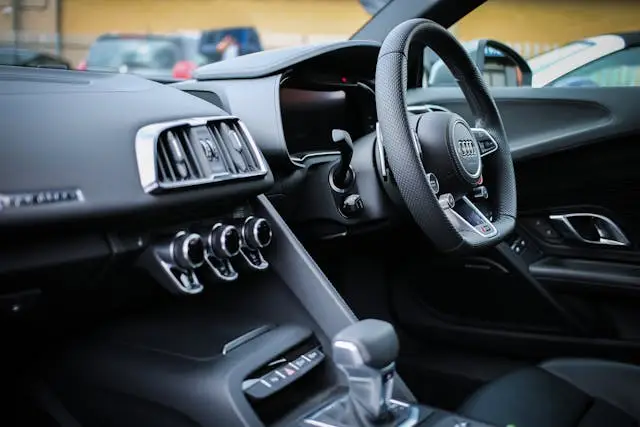In today’s world, automotive technology is evolving rapidly, and so is the need for more advanced software in vehicles. One such standard that is widely used in the automotive industry is AUTOSAR. If you are curious about what AUTOSAR is and how it works, this A to Z guide will give you a complete understanding.
A: AUTOSAR Overview
AUTOSAR stands for Automotive Open System Architecture. It is a global development partnership that standardizes the software architecture in vehicles. The main goal of AUTOSAR is to make vehicle software more flexible, reusable, and scalable.
B: Benefits of AUTOSAR
AUTOSAR offers many benefits to the automotive industry:
Flexibility: The architecture allows manufacturers to choose different hardware and software components.
Scalability: It can be used in different types of vehicles, from basic cars to luxury ones.
Modularity: The software components can be replaced or upgraded easily.
C: Components of AUTOSAR
AUTOSAR has two primary layers:
1. Basic Software (BSW): This layer provides fundamental services like memory management and communication protocols.
2. Application Layer: This layer deals with specific functionalities like engine control or braking systems.
D: Diagnostic Communication
AUTOSAR supports diagnostic communication standards such as UDS (Unified Diagnostic Services) to ensure proper vehicle maintenance and fault detection.
E: ECU (Electronic Control Unit)
ECUs are the brain of any vehicle. They control different parts like engine, transmission, and safety systems. AUTOSAR helps to integrate these ECUs efficiently.
F: Functionalities of AUTOSAR
Some key functionalities include:
Communication: AUTOSAR enables communication between ECUs, sensors, and actuators.
Control: It allows control over critical functions like braking, steering, and engine management.
G: Global Collaboration
AUTOSAR is a global initiative involving major automotive companies such as BMW, Bosch, and Toyota, among others.
H: Hardware Abstraction
One key feature of AUTOSAR is hardware abstraction. It separates the software from hardware, making it easier to update and replace hardware components without affecting the software.
I: Interface Layer
The interface layer in AUTOSAR defines how different software components communicate with each other.
J: Java in AUTOSAR
AUTOSAR allows the use of Java for certain application layers. However, C and C++ are more commonly used for low-level hardware communication.
K: Kernel
The operating system within AUTOSAR is known as the Operating System Kernel (OS Kernel). It manages tasks and resources in a real-time environment.
L: Layers in AUTOSAR
AUTOSAR consists of several layers, which include:
1. Application Layer
2. RTE (Runtime Environment)
3. BSW (Basic Software) Layer
4. Microcontroller Abstraction Layer (MCAL)
M: Microcontroller Abstraction Layer (MCAL)
MCAL is a key layer that provides an abstraction of the microcontroller hardware for the software. It helps make the software portable across different hardware platforms.
N: Non-Volatile Memory
AUTOSAR supports non-volatile memory to store important data, such as calibration data or error codes, even when the vehicle is powered off.
O: OS in AUTOSAR
The operating system in AUTOSAR is designed for real-time performance. It handles task scheduling, inter-process communication, and time synchronization.
P: Portability
The primary goal of AUTOSAR is portability. The architecture allows developers to write software that works across different vehicle platforms without major modifications.
Q: Quality Assurance
AUTOSAR standards also focus on quality assurance, ensuring that the software is tested thoroughly for safety, reliability, and performance.
R: Runtime Environment (RTE)
The RTE acts as a middleware between the application layer and the lower layers like BSW. It ensures seamless communication and data flow between different software components.
S: Safety
AUTOSAR supports safety-critical applications, with a focus on ensuring that the software meets functional safety standards, such as ISO 26262.
T: Testing in AUTOSAR
Testing is an essential part of the AUTOSAR development process. It includes testing the software components individually and as a whole system to ensure compatibility and functionality.
U: Unified Modeling Language (UML)
AUTOSAR uses UML to model and design the software architecture. UML diagrams help developers to visualize and understand the complex interactions within the system.
V: Virtualization
Virtualization in AUTOSAR allows multiple operating systems to run on a single hardware platform, improving resource efficiency.
W: Workshop Tools
AUTOSAR uses various software tools for design, simulation, and testing of the automotive system. These tools help developers to implement and test their software before deployment.
X: XML for Configuration
AUTOSAR uses XML (eXtensible Markup Language) files for configuring different system parameters. These XML files allow for easy integration of new components.
Y: Yielding to Real-Time Needs
AUTOSAR is designed to handle real-time requirements, ensuring that time-sensitive tasks are completed within a defined time limit, which is crucial for automotive applications.
Z: Zero Defects
The goal of AUTOSAR development is “zero defects.” The system aims to eliminate bugs and issues in the software by following strict testing and validation processes.
Conclusion
Autosar is an essential standard in the automotive industry, bringing numerous benefits such as flexibility, scalability, and portability. Whether you’re an automotive engineer or just interested in vehicle software, understanding AUTOSAR is crucial for staying ahead in this rapidly evolving field.
Read Post: Understanding AUTOSAR: A Simple Guide to Automotive Software Architecture

